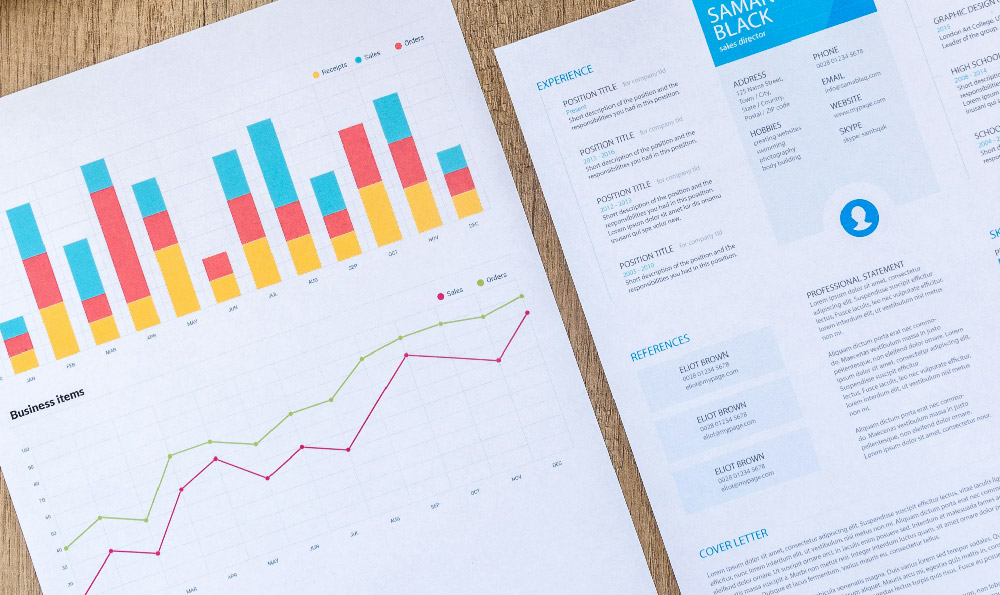Investing: What is it and how can I do it?
Investing, at its core, is the act of allocating resources, usually money, with the expectation of generating an income or profit. It's about putting your money to work, allowing it to grow over time, and ultimately achieving your financial goals. Think of it as planting a seed – you invest time and effort, nurture it, and hope that it blossoms into something much larger and more valuable. This contrasts with saving, where you typically set aside money for short-term needs or emergencies, with the primary goal of preserving its value. Investing, on the other hand, embraces risk to potentially achieve greater returns.
The motivations for investing are as varied as the individuals who engage in it. Some invest to build a comfortable retirement nest egg, ensuring they can maintain their lifestyle after they stop working. Others aim to purchase a home, finance their children's education, or simply achieve financial independence. Whatever the reason, investing provides a pathway to reaching these milestones and securing a more financially stable future.

Now, how do you actually do it? The landscape of investment options is vast and can seem daunting at first. Let's break down some of the most common avenues available to investors, highlighting their characteristics, risks, and potential rewards:
-
Stocks (Equities): When you buy stock in a company, you are essentially becoming a part-owner. Stocks offer the potential for significant capital appreciation, meaning the value of your shares can increase substantially over time. They are considered a higher-risk investment due to market volatility and the inherent uncertainties associated with individual companies and the broader economy. However, historically, stocks have provided higher average returns compared to other asset classes over the long term. Understanding a company's financials, its competitive position, and industry trends is crucial before investing in its stock. You can invest directly in individual stocks or through mutual funds or exchange-traded funds (ETFs) that hold a basket of stocks.
-
Bonds (Fixed Income): Bonds are essentially loans you make to a government or corporation. In return, they promise to pay you a fixed interest rate over a specific period and then repay the principal amount at maturity. Bonds are generally considered less risky than stocks, providing a more predictable income stream. However, their potential for capital appreciation is typically lower. Bond prices can fluctuate based on interest rate movements; when interest rates rise, bond prices tend to fall, and vice versa. Different types of bonds exist, including government bonds, corporate bonds, and municipal bonds, each with varying levels of risk and yield.
-
Mutual Funds: These are investment vehicles that pool money from multiple investors to purchase a diversified portfolio of stocks, bonds, or other assets. Managed by professional fund managers, mutual funds offer instant diversification and access to a wide range of investment strategies. They are a convenient option for beginners as they eliminate the need to research and select individual securities. However, mutual funds charge management fees and expense ratios, which can impact overall returns. Different types of mutual funds cater to various investment objectives, such as growth funds, income funds, and balanced funds.
-
Exchange-Traded Funds (ETFs): Similar to mutual funds, ETFs are baskets of securities that trade on stock exchanges like individual stocks. ETFs often track a specific index, sector, or commodity, providing investors with exposure to a broad market segment. They are generally more tax-efficient and have lower expense ratios than mutual funds, making them a popular choice for cost-conscious investors. ETFs offer flexibility and liquidity, allowing investors to buy and sell shares throughout the trading day.
-
Real Estate: Investing in real estate involves purchasing property, either for residential or commercial purposes, with the expectation of generating income through rental payments or capital appreciation when the property is sold. Real estate can be a tangible asset that provides a hedge against inflation. However, it also requires significant capital outlay, ongoing maintenance costs, and can be illiquid, meaning it can take time to sell. Factors like location, property condition, and market conditions significantly influence real estate investment returns.
-
Commodities: These are raw materials or primary agricultural products that can be bought and sold, such as gold, oil, and agricultural products like wheat or corn. Investing in commodities can provide diversification to a portfolio and act as a hedge against inflation. However, commodity prices can be highly volatile and influenced by various factors, including supply and demand, geopolitical events, and weather conditions. Investing directly in commodities can be complex, so investors often use commodity futures contracts or commodity-related ETFs.
Getting Started: A Practical Guide
Before diving into the world of investing, it’s essential to take a few crucial steps:
-
Define Your Financial Goals: What are you hoping to achieve through investing? Do you want to retire early, buy a house, or fund your children's education? Clearly defining your goals will help you determine your investment time horizon and risk tolerance.
-
Assess Your Risk Tolerance: How comfortable are you with the possibility of losing money? Are you willing to take on higher risk for the potential of higher returns, or do you prefer a more conservative approach? Your risk tolerance will influence the types of investments you choose.
-
Create a Budget: Understanding your income and expenses is fundamental to successful investing. A budget helps you identify how much money you can realistically allocate to investments each month.
-
Pay Down High-Interest Debt: Before investing, prioritize paying down high-interest debt, such as credit card debt or personal loans. The interest you pay on these debts can significantly outweigh the returns you earn on your investments.
-
Start Small and Diversify: Begin with a modest amount that you can afford to lose. Don't put all your eggs in one basket. Diversify your investments across different asset classes, sectors, and geographic regions to reduce risk.
-
Do Your Research: Before investing in any asset, take the time to thoroughly research it. Understand the company's financials, industry trends, and potential risks. Read reputable financial news sources and consult with financial professionals if needed.
-
Consider Consulting a Financial Advisor: A financial advisor can provide personalized guidance based on your individual circumstances and help you create a tailored investment plan. They can also help you stay on track towards your financial goals and adjust your strategy as needed.
-
Stay Informed and Patient: The investment landscape is constantly evolving. Stay informed about market trends and economic developments. Remember that investing is a long-term game. Don't panic sell during market downturns. Be patient and stick to your investment plan.
Investing is a powerful tool for building wealth and achieving financial security. By understanding the basics of investing, defining your goals, and developing a sound investment strategy, you can embark on a journey towards a brighter financial future. While there's no guarantee of returns, with diligence, patience, and a bit of knowledge, you can significantly improve your chances of success.












